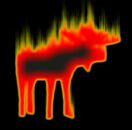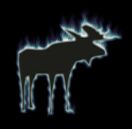
Introduction 
Introduction Hot vs. Cold? 
Introduction
|

We regret to inform you that this topic is not as cool as it sounds. Sorry! However, due to frequent questions about this, we believe it is important enough to discuss.
The temperature of dark matter is a measure of how quickly the structure particles (the particles that compose, or make up the dark matter) are moving. Hot refers to dark matter moving at or near the speed of light, while cold refers to dark matter particles moving much slower than that. (Side note: WIMPS are theoretically on the colder side of this scale--thus giving credit to the theory that they move relatively slow.)
As we have said before, the fate of the universe depends on how much dark matter exists, and not whether it is hot or cold.
Nevertheless, hot and cold dark matter plays a vital part in the understanding of the development of galaxies. If all dark matter in the early universe were cold, then galaxies would form first and later assemble into clusters. At the same time though, huge voids and long structures--which have been observed by astronomers--would not occur. If all the primordial dark matter were hot, large-scale structure would come first with individual galaxies materializing later. But in this scenario, galaxies would have formed too late to account for observations of phenomenon like quasars. Logically, and according to computer simulations, the universe probably contains a mixture of both hot and cold dark matter.
Tim doesn't really have much to do with the topic here, but he signed a contract with us which included a clause establishing a certain amount of appearances throughout the web-site. Thus, we had to fit him in somewhere. (Note to ASPCA: Tim is not real; we didn't burn a moose, nor did we freeze one.)
|




